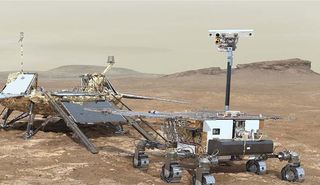Thousands of hills and mounds on Mars have been found to contain layers of clay minerals, which formed when running water interacted with the rocks during a period when Mars’ northern reaches were flooded. “This research shows us that Mars’ climate was dramatically different in the distant past,” Joe McNeil of the Natural History Museum in London said in a statement. “The mounds are rich in clay minerals, meaning liquid water must have been present at the surface in large quantities nearly four billion years ago.” Mars is a planet…
Read MoreDay: January 25, 2025
This Week In Space podcast: Episode 145 —We’re ‘Star Bound’ with a guide to America’s space program
On Episode 145 of This Week In Space, Rod Pyle and Tariq Malik meet the authors of a new book about spaceflight called “Star Bound: A Beginner’s Guide to the American Space Program, from Goddard’s Rockets to Goldilocks Planets and Everything in Between,” Emily Carney and Bruce McCandless III. Related: ‘Star Bound’ serves up a ‘snarky approach to space history’ and the American space program (exclusive) Emily started the popular Facebook group Space Hipsters, now 66,000 members strong, and Bruce is a retired lawyer and space enthusiast who also happens…
Read MoreInvisible ‘flickering’ on the sun could predict potentially dangerous solar flares hours in advance
Shining loops of plasma on the surface of the sun “flicker” hours before they unleash potentially dangerous solar flares, a new study shows. The new findings could help create more reliable space weather forecasts, researchers say. Solar flares are violent outbursts of electromagnetic radiation that shoot from the sun when invisible magnetic field lines at the sun’s surface get twisted up until they eventually snap. These outbursts most commonly occur around sunspots — dark patches where magnetic field lines poke through our home star’s surface — and often pull up…
Read More
